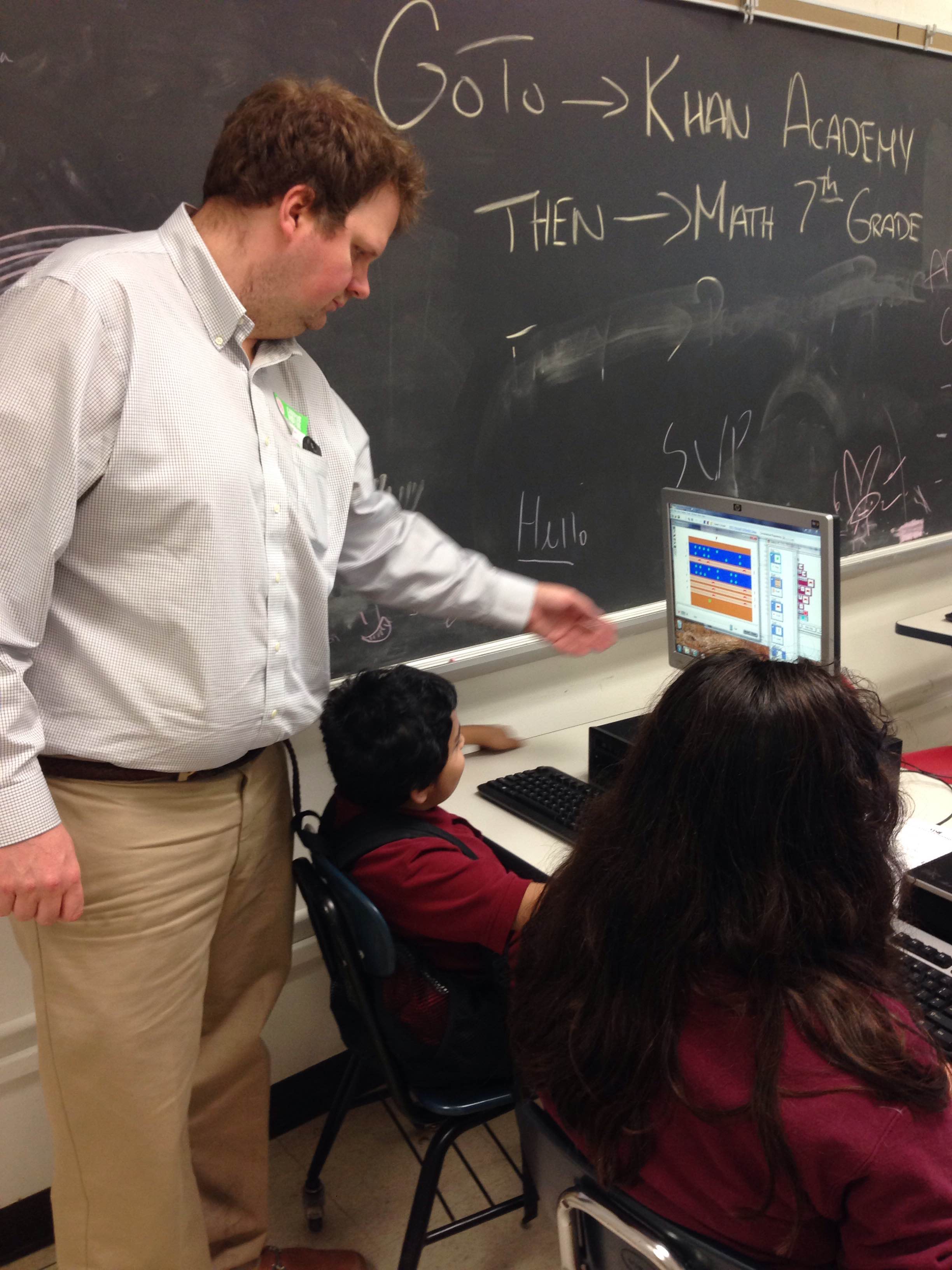Coding: The Building Blocks of Imagination!
 While many middle schoolers love to play Mario Kart, Legend of Zelda, and Angry Birds, not many get to play video games they designed themselves. Neither had the students at Edison Middle School until they took “Video Game Design” with Roger Pease.
“All of them had used computers before, but not many of them had ever been exposed to computer programming. I wanted to show them that it was accessible,” Pease said.
While many middle schoolers love to play Mario Kart, Legend of Zelda, and Angry Birds, not many get to play video games they designed themselves. Neither had the students at Edison Middle School until they took “Video Game Design” with Roger Pease.
“All of them had used computers before, but not many of them had ever been exposed to computer programming. I wanted to show them that it was accessible,” Pease said.
Pease, who works as an embedded program developer at software company Enbase LLC, taught the students how to program their own version of Frogger, a popular 1981 arcade game in which the player helps a frog cross a highway and a river to get to safety while avoiding oncoming cars, logs, or alligators.
“We chose Frogger because it involved a number of different aspects (of programming) but wasn’t too complicated,” he said.
Pretty soon, the students wanted to do more than move the frog back and forth.
“Some kids wanted to create a chess game or replicate the Game of Life. I would tell them that it was a great idea and that they could do it someday.”
So how did Roger transform these middle school students into tech-savvy game designers?
It was not always an easy journey, especially since he only had one assistant, an AmeriCorps teaching fellow, to help him teach the class.
“When you teach computers you have to be really detail oriented and sometimes you say something in a way kids don’t understand. It was hard not to have another person who understood the material there to correct me.”
About halfway through the apprenticeship though, the students were creating their own virtual worlds. The setting for the original Frogger is the highway, the river, and a bare patch of green in between. They decided to revamp the landscape by making extra ponds and trees to dot the blank scene. When trees and ponds became too basic, they moved on to creating new characters and new cars (Ferarris, of course!)
One environmentally conscious student, who was tired of the streets and roads, even changed the entire highway scene to create a dirt path with bikes! These students were building their own worlds not with bricks and mortar, but with JavaScript and HTML.
Sometimes though, students mastered codes and commands without the help of a teacher! And sometimes, they even discovered something that wasn’t part of the curriculum to begin with!
“One girl had figured out how to make the cars move in different directions. I hadn’t even taught her that. She learned it just from paying attention!”
Of course, when learning something that is so technical and detail oriented, it is always helpful to have a helpful and understanding mentor.
“Patience and kindness flowed out of him easily, and never have I ever seen him frustrated with a child. He would sit down with each of them, take his time to explain if they were having trouble, and kept them on track with the goal of the apprenticeship,” said Helen Tai, the AmeriCorps Teaching Fellow who taught the class alongside Pease.
Pease’s secret to mentoring middle school students: stay the course and don’t expect a reward right away.
“They’re not automatically going to be excited about things as you may be. Many may decide that computer science isn’t for them, but I wanted to show them that it was something they could do.” Please join us in congratulating Roger Pease as Citizen Teacher of the month.
